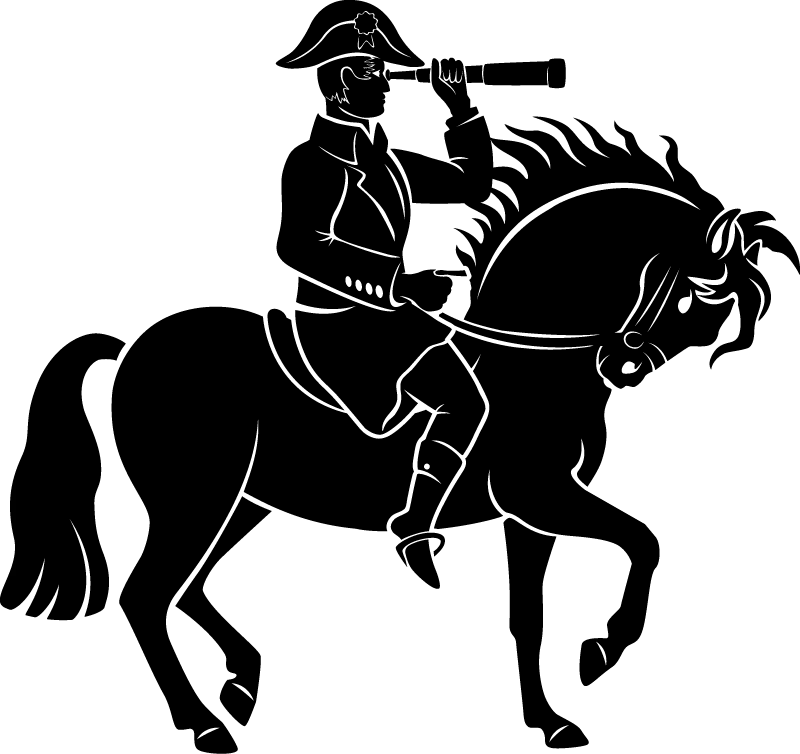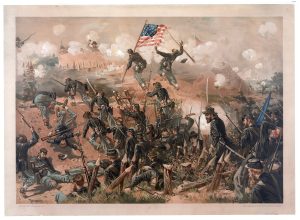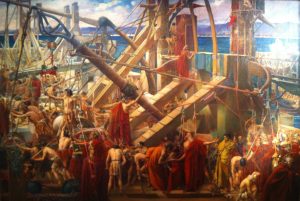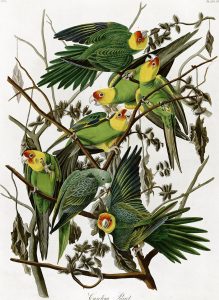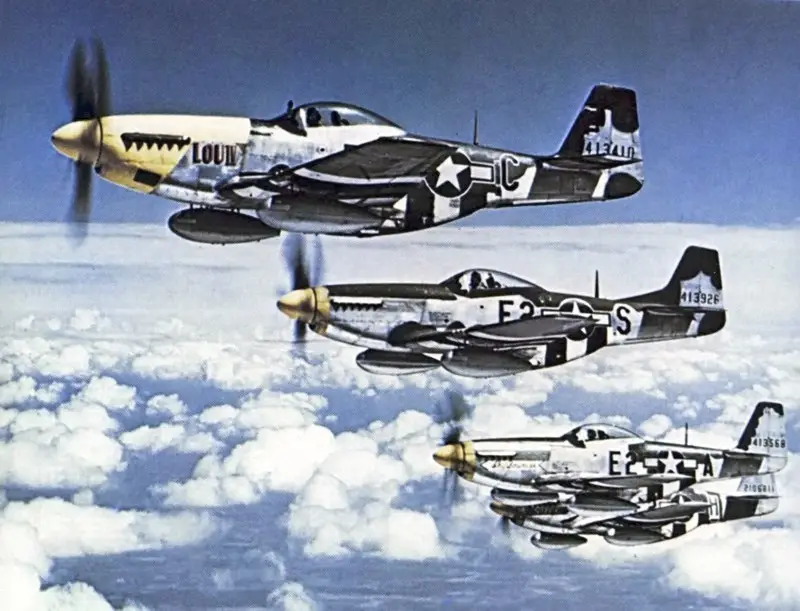
P-51 Mustangs of the 375th Fighter Squadron, Eighth Air Force mid-1944 (Wiki Image).
Introduction
There was no top fighter airplane in 1913. Fighter aircraft did not yet exist. The first fighter aircraft were developed during World War I in response to the need for aircraft that could shoot down enemy aircraft.
The first fighter aircraft were biplanes, and they were armed with machine guns. They were relatively slow and had a short range, but they were very maneuverable. This made them ideal for dogfighting, the air combat tactic of the time.
Some of the most notable early fighter aircraft included the Sopwith Camel, the Albatros D.II, and the Fokker Dr.I. These aircraft were flown by some of the most famous aces of World War I, such as Manfred von Richthofen and Billy Bishop.
Fighter aircraft continued to evolve after World War I, becoming increasingly faster and more powerful. By the start of World War II, fighter aircraft were capable of speeds of over 300 mph and altitudes of over 30,000 feet.
Today, fighter aircraft are some of the most advanced aircraft in the world. Air forces use them worldwide for air defense, superiority, and ground attack missions.
So, while there was no top fighter airplane in 1913, developing fighter aircraft during World War I was a major milestone in aviation history. Fighter aircraft have played a major role in all major conflicts since World War I and remain an essential part of modern air forces.
AI 1914-15 German Fokker E.III
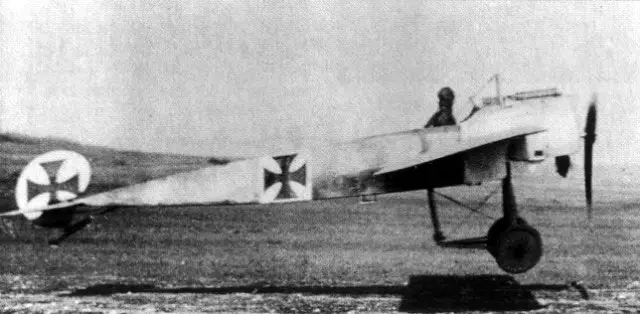
Fokker E.III (Wiki Image).
The top fighter airplane in 1914 was the Fokker E.III. It was a German monoplane fighter aircraft known for its speed, maneuverability, and firepower. The E.III was one of the most successful fighter aircraft of the early years of World War I, and it was flown by some of the most famous aces of the war, such as Max Immelmann and Oswald Boelcke.
The E.III was first flown in 1914 and entered service in the German Air Force (Luftstreitkräfte) in the same year. It was powered by a single Oberursel U.III rotary engine, which gave it a top speed of over 100 mph. The E.III was armed with a synchronized Spandau machine gun, which made it one of the first fighter aircraft to be armed with a synchronized machine gun.
The E.III was a very maneuverable aircraft, and it was able to outturn most other fighter aircraft of the time. It was also very durable, and it could withstand a lot of damage. The E.III’s maneuverability and durability made it a very effective fighter aircraft, and it was responsible for shooting down many enemy aircraft during World War I.
The E.III remained in service with the German Air Force until 1916. Air forces worldwide also used it, including the Austro-Hungarian Air Force and the Ottoman Air Force.
Here are some of the reasons why the Fokker E.III was considered the top fighter airplane in 1914:
- It was highly maneuverable, which made it difficult for enemy aircraft to shoot down.
- It was heavily armed with a synchronized Spandau machine gun.
- It was relatively durable and could withstand a lot of damage.
- It was powered by a powerful engine, which gave it a good top speed.
The Fokker E.III was a truly remarkable aircraft. It was one of the most successful fighter aircraft of the early years of World War I, and it played a major role in the German Air Force’s dominance of the skies in the early years of the war.
AI 1916 German Albatros Flugzeugwerke Albatros D.II
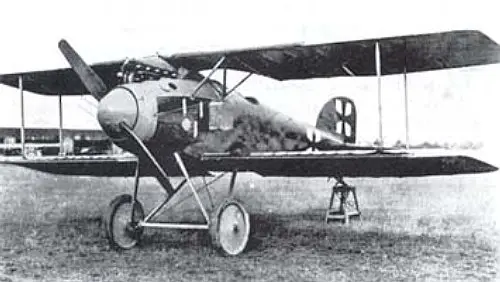
Albatros D.II (Wiki Image).
The top fighter airplane in 1916 was the Albatros D.II. It was a German biplane fighter aircraft known for maneuverability, speed, and firepower. The D.II was one of the most successful fighter aircraft of World War I, and it was flown by some of the most famous aces of the war, such as Manfred von Richthofen and Oswald Boelcke.
The D.II was first flown in 1916 and entered service in the German Air Force (Luftstreitkräfte) in the same year. It was powered by a single Mercedes D.III engine, which gave it a top speed of over 115 mph. The D.II was armed with two synchronized Spandau machine guns, making it one of the war’s most heavily armed fighter aircraft.
The D.II was a very maneuverable aircraft, and it was able to outturn most other fighter aircraft of the time. It was also very durable, and it could withstand a lot of damage. The D.II’s maneuverability and durability made it a very effective fighter aircraft, and was responsible for shooting down many enemy aircraft during World War I.
The D.II remained in service with the German Air Force until 1917. Air forces worldwide also used it, including the Austro-Hungarian Air Force and the Ottoman Air Force.
Here are some of the reasons why the Albatros D.II was considered the top fighter airplane in 1916:
- It was highly maneuverable, which made it difficult for enemy aircraft to shoot down.
- It was heavily armed, with two synchronized Spandau machine guns.
- It was relatively durable and could withstand a lot of damage.
- It was powered by a powerful engine, which gave it a good top speed.
The Albatros D.II was a truly remarkable aircraft. It was one of the most successful fighter aircraft of World War I, and it played a major role in the German Air Force’s dominance of the skies in the early years of the war.
AI 1917 English Sopwith Aviation Company Sopwith Camel
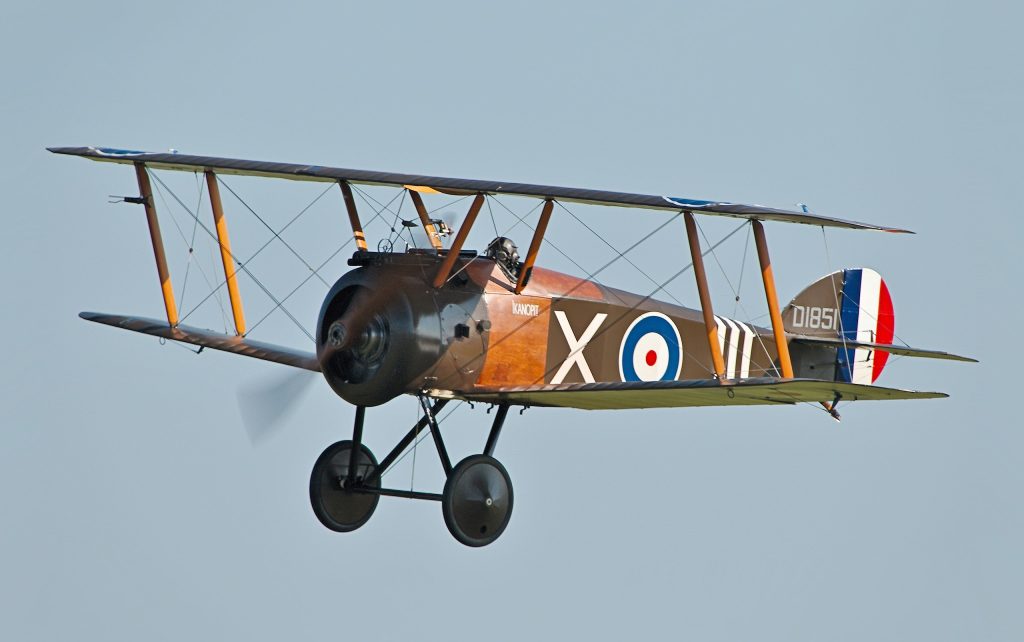
Sopwith Camel (Wiki Image).
The top fighter airplane in 1917 was the Sopwith Camel. It was a British biplane fighter aircraft known for maneuverability, speed, and firepower. The Camel was one of the most successful fighter aircraft of World War I, and it was flown by some of the most famous aces of the war, such as Billy Bishop and Manfred von Richthofen.
The Camel was first flown in 1917 and entered the Royal Air Force service in the same year. It was powered by a single Clerget Le Rhône 9 rotary engine, which gave it a top speed of over 115 mph. The Camel was armed with two synchronized Vickers machine guns, making it one of the war’s most heavily armed fighter aircraft.
The Camel was a very maneuverable aircraft, and it was able to outturn most other fighter aircraft of the time. It was also very durable, and it could withstand a lot of damage. The Camel’s maneuverability and durability made it a very effective fighter aircraft, and it was responsible for shooting down many enemy aircraft during World War I.
The Camel remained in service with the Royal Air Force until 1920. Air forces worldwide also used it, including the United States Army Air Service and the French Air Force.
Here are some of the reasons why the Sopwith Camel was considered the top fighter airplane in 1917:
- It was highly maneuverable, which made it difficult for enemy aircraft to shoot down.
- It was heavily armed, with two synchronized Vickers machine guns.
- It was relatively durable and could withstand a lot of damage.
- It was powered by a powerful engine, which gave it a good top speed.
The Sopwith Camel was a truly remarkable aircraft. It was one of the most successful fighter aircraft of World War I, and it played a major role in the Allied victory.
It is important to note that other excellent fighter aircraft were in service in 1917, such as the Albatros D.V, the SPAD S.VII, and the Fokker Dr.I. However, the Sopwith Camel was generally considered the best fighter aircraft of the year due to its maneuverability, speed, firepower, and durability.
AI 1918-19 German Fokker D.VII
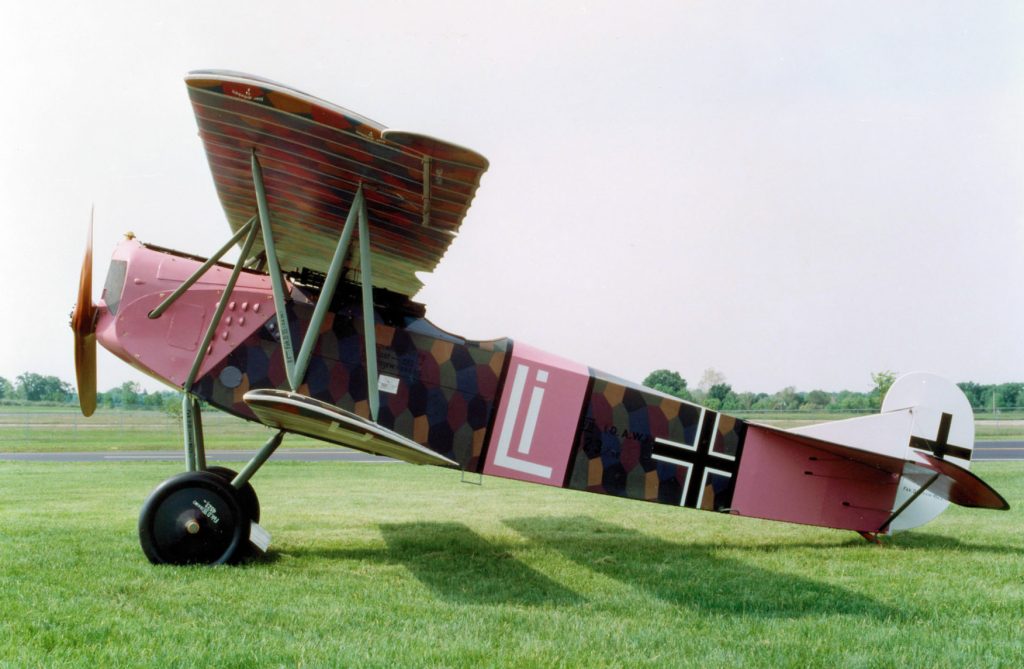
Fokker D.VII (Wiki Image).
The top fighter airplane in 1918 was the Fokker D.VII. It was a German biplane fighter aircraft known for maneuverability, speed, and firepower. The D.VII was one of the most successful fighter aircraft of World War I, and it played a major role in the German Air Force’s fightback in the last year of the war.
The D.VII was first flown in 1918 and entered service in the German Air Force in the same year. It was powered by a single Mercedes D.IIIa engine, which gave it a top speed of over 115 mph. The D.VII was armed with two synchronized Spandau machine guns, making it one of the war’s most heavily armed fighter aircraft.
The D.VII was a very maneuverable aircraft, and it was able to outturn most other fighter aircraft of the time. It was also very durable, and it could withstand a lot of damage. The D.VII’s maneuverability and durability made it a very effective fighter aircraft, and it was responsible for shooting down many Allied aircraft during World War I.
The D.VII remained in service with the German Air Force until the end of the war. Air forces worldwide also used it after the war, including the Polish Air Force and the Romanian Air Force.
Here are some of the reasons why the Fokker D.VII was considered the top fighter airplane in 1918:
- It was highly maneuverable, which made it difficult for enemy aircraft to shoot down.
- It was heavily armed, with two synchronized Spandau machine guns.
- It was relatively durable and could withstand a lot of damage.
- It was powered by a powerful engine, which gave it a good top speed.
- It was easy to produce and maintain.
The Fokker D.VII was a truly remarkable aircraft. It was one of the most successful fighter aircraft of World War I, and it played a major role in the German Air Force’s fightback in the last year of the war. It is considered to be one of the greatest fighter aircraft ever built.
AI 1920-21 French Nieuport-Delage NiD 29
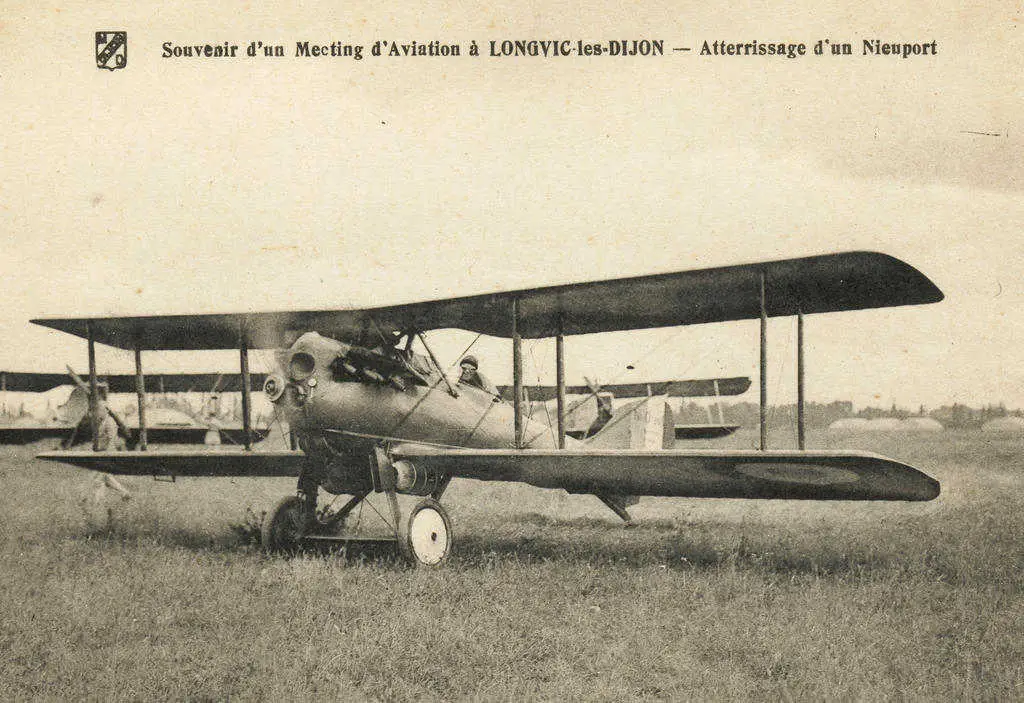
NiD 29 (Wiki Image).
The top fighter airplane in 1920 was the Nieuport-Delage NiD 29. It was a French biplane fighter aircraft known for its speed, maneuverability, and firepower. The NiD 29 was one of the most successful fighter aircraft of the early 1920s, and air forces worldwide used it.
The NiD 29 was first flown in 1919 and entered the French Air Force service in the same year. It was powered by a single Gnome Monosoupape 9N rotary engine, which gave it a top speed of over 130 mph. The NiD 29 was armed with two synchronized Vickers machine guns, which made it one of the most heavily armed fighter aircraft of the time.
The NiD 29 was a very maneuverable aircraft, and it was able to outturn most other fighter aircraft of the time. It was also very durable, and it could withstand a lot of damage. The NiD 29’s maneuverability and durability made it a very effective fighter aircraft, and it was responsible for shooting down many enemy aircraft during the early 1920s.
The NiD 29 remained in service with the French Air Force until 1925. Air forces worldwide also used it, including the Belgian Air Force, the Polish Air Force, and the Japanese Army Air Force.
Here are some of the reasons why the Nieuport-Delage NiD 29 was considered the top fighter airplane in 1920:
- It was highly maneuverable, which made it difficult for enemy aircraft to shoot down.
- It was heavily armed, with two synchronized Vickers machine guns.
- It was relatively durable and could withstand a lot of damage.
- It was powered by a powerful engine, which gave it a good top speed.
- It was easy to produce and maintain.
The Nieuport-Delage NiD 29 was a truly remarkable aircraft. It was one of the most successful fighter aircraft of the early 1920s, and it played a major role in the development of modern fighter aircraft.
AI 1922 English Gloster Gamecock
The top fighter airplane in 1922 was the Gloster Gamecock. It was a British biplane fighter aircraft known for its speed, maneuverability, and firepower. The Gamecock was one of the most successful fighter aircraft of the early 1920s, and air forces worldwide used it.
The Gamecock was first flown in 1921 and entered the Royal Air Force service in 1922. It was powered by a single Bristol Jupiter IV radial engine, which gave it a top speed of over 150 mph. The Gamecock was armed with two synchronized Vickers machine guns and two Lewis machine guns mounted on the wings.
The Gamecock was a very maneuverable aircraft, and it was able to outturn most other fighter aircraft of the time. It was also very durable, and it could withstand a lot of damage. The Gamecock’s maneuverability and durability made it a very effective fighter aircraft, and it was responsible for shooting down many enemy aircraft during the early 1920s.
The Gamecock remained in service with the Royal Air Force until 1927. Air forces worldwide also used it, including the Japanese Army Air Force, the Australian Air Force, and the New Zealand Air Force.
Here are some of the reasons why the Gloster Gamecock was considered the top fighter airplane in 1922:
- It was highly maneuverable, which made it difficult for enemy aircraft to shoot down.
- It was heavily armed, with four machine guns.
- It was relatively durable and could withstand a lot of damage.
- It was powered by a powerful engine, which gave it a good top speed.
- It was easy to produce and maintain.
The Gloster Gamecock was a truly remarkable aircraft. It was one of the most successful fighter aircraft of the early 1920s, and it played a major role in the development of modern fighter aircraft.
While there were other excellent fighter aircraft in service in 1922, such as the Nieuport-Delage NiD 29, the Sopwith Camel, and the Fokker D.VII, the Gamecock was generally considered to be the best fighter aircraft of the year due to its combination of maneuverability, speed, firepower, and durability.
AI 1923 English Gloster Gamecock II
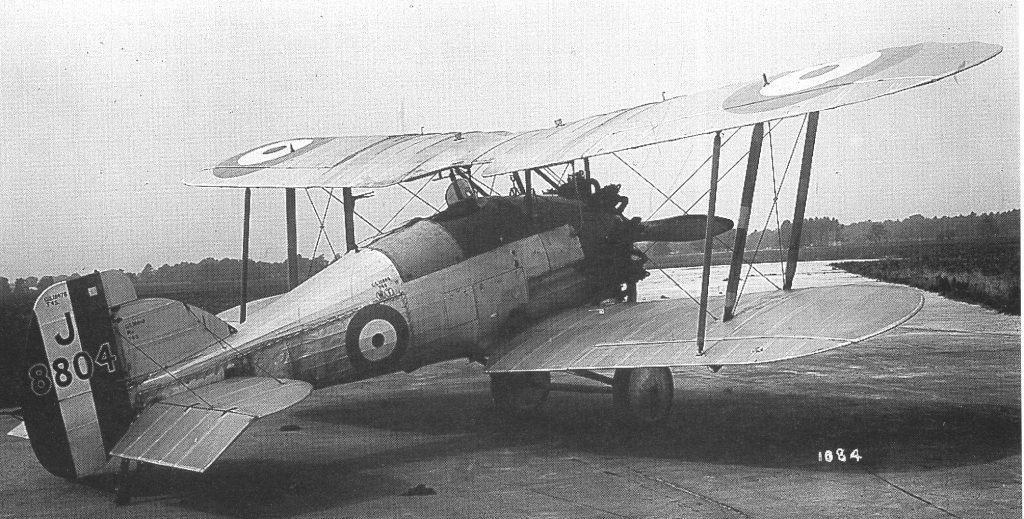
Gamecock II (Wiki Image).
The top fighter airplane in 1923 was the Gloster Gamecock II. It was an improved version of the Gloster Gamecock, a British biplane fighter aircraft. The Gamecock II was faster, more maneuverable than its predecessor, and more heavily armed.
The Gamecock II was first flown in 1922 and entered the Royal Air Force service in 1923. It was powered by a single Bristol Jupiter IV radial engine, which gave it a top speed of over 155 mph. The Gamecock II was armed with four machine guns, two synchronized Vickers machine guns, and two Lewis machine guns mounted on the wings.
The Gamecock II was a very maneuverable aircraft, and it was able to outturn most other fighter aircraft of the time. It was also very durable, and it could withstand a lot of damage. The Gamecock II’s maneuverability and durability made it a very effective fighter aircraft, and it was responsible for shooting down many enemy aircraft during the early and mid-1920s.
The Gamecock II remained in service with the Royal Air Force until 1929. Air forces worldwide also used it, including the Japanese Army Air Force, the Australian Air Force, and the New Zealand Air Force.
Here are some of the reasons why the Gloster Gamecock II was considered the top fighter airplane in 1923:
- It was highly maneuverable, which made it difficult for enemy aircraft to shoot down.
- It was heavily armed, with four machine guns.
- It was relatively durable and could withstand a lot of damage.
- It was powered by a powerful engine, which gave it a good top speed.
- It was easy to produce and maintain.
The Gloster Gamecock II was a truly remarkable aircraft. It was one of the most successful fighter aircraft of the early and mid-1920s, and it played a major role in the development of modern fighter aircraft.
While there were other excellent fighter aircraft in service in 1923, such as the Nieuport-Delage NiD 29, the Sopwith Camel, and the Fokker D.VII, the Gamecock II was generally considered to be the best fighter aircraft of the year due to its combination of maneuverability, speed, firepower, and durability.
AI 1924 American Curtiss PW-8
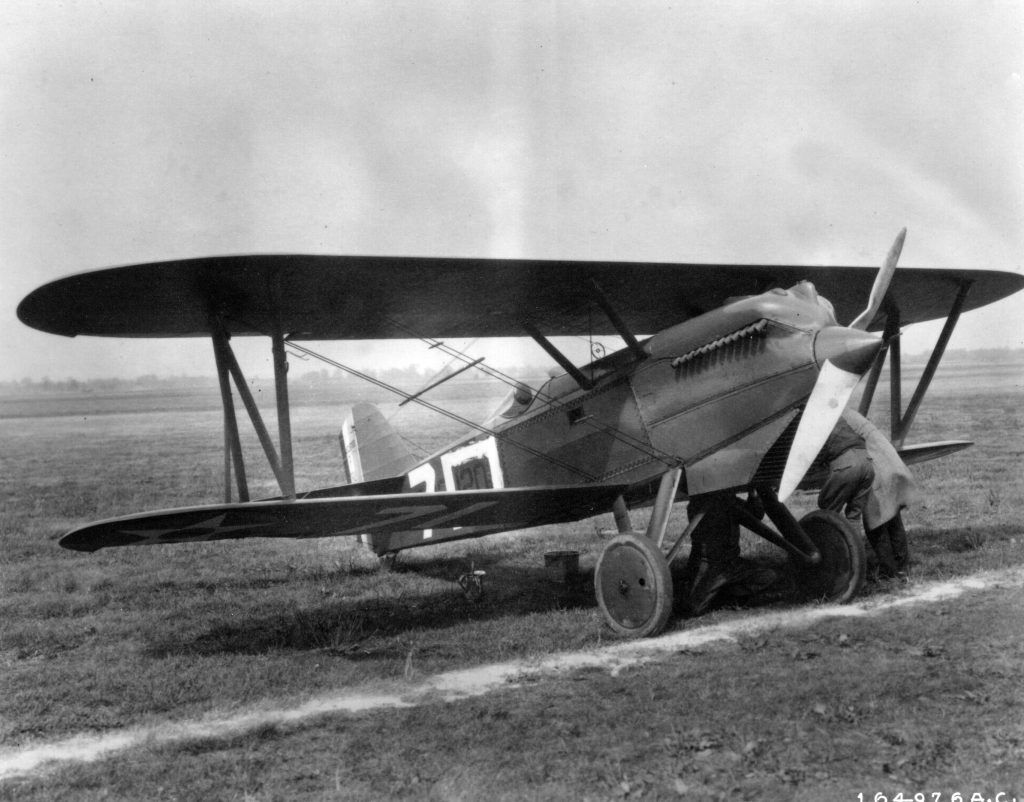
PW-8 (Wiki Image).
The top fighter airplane in 1924 was the Curtiss PW-8. It was an American biplane fighter aircraft known for its speed, maneuverability, and firepower. The PW-8 was one of the most advanced fighter aircraft of the early 1920s, and the United States Army Air Service and the United States Navy used it.
The PW-8 was first flown in 1923 and entered service in the United States Army Air Service in 1924. It was powered by a single Curtiss D-12A V-12 engine, which gave it a top speed of over 170 mph. The PW-8 was armed with two synchronized Browning machine guns and two Lewis machine guns mounted on the wings.
The PW-8 was a very maneuverable aircraft, and it was able to outturn most other fighter aircraft of the time. It was also very durable, and it could withstand a lot of damage. The PW-8’s maneuverability, durability, and firepower made it a very effective fighter aircraft, and it was responsible for shooting down many enemy aircraft during the mid-1920s.
The PW-8 remained in service with the United States Army Air Service and the United States Navy until 1929. Air forces worldwide also used it, including the Japanese Army Air Force, the Argentine Air Force, and the Brazilian Air Force.
Here are some of the reasons why the Curtiss PW-8 was considered the top fighter airplane in 1924:
- It was highly maneuverable, which made it difficult for enemy aircraft to shoot down.
- It was heavily armed, with four machine guns.
- It was relatively durable and could withstand a lot of damage.
- It was powered by a powerful engine, which gave it a good top speed.
- It was easy to produce and maintain.
The Curtiss PW-8 was a truly remarkable aircraft. It was one of the most successful fighter aircraft of the early and mid-1920s, and it played a major role in the development of modern fighter aircraft.
While there were other excellent fighter aircraft in service in 1924, such as the Gloster Gamecock II, the Nieuport-Delage NiD 29, and the Sopwith Camel, the PW-8 was generally considered to be the best fighter aircraft of the year due to its combination of maneuverability, speed, firepower, and durability.
AI 1925 American Curtiss P-1 Hawk
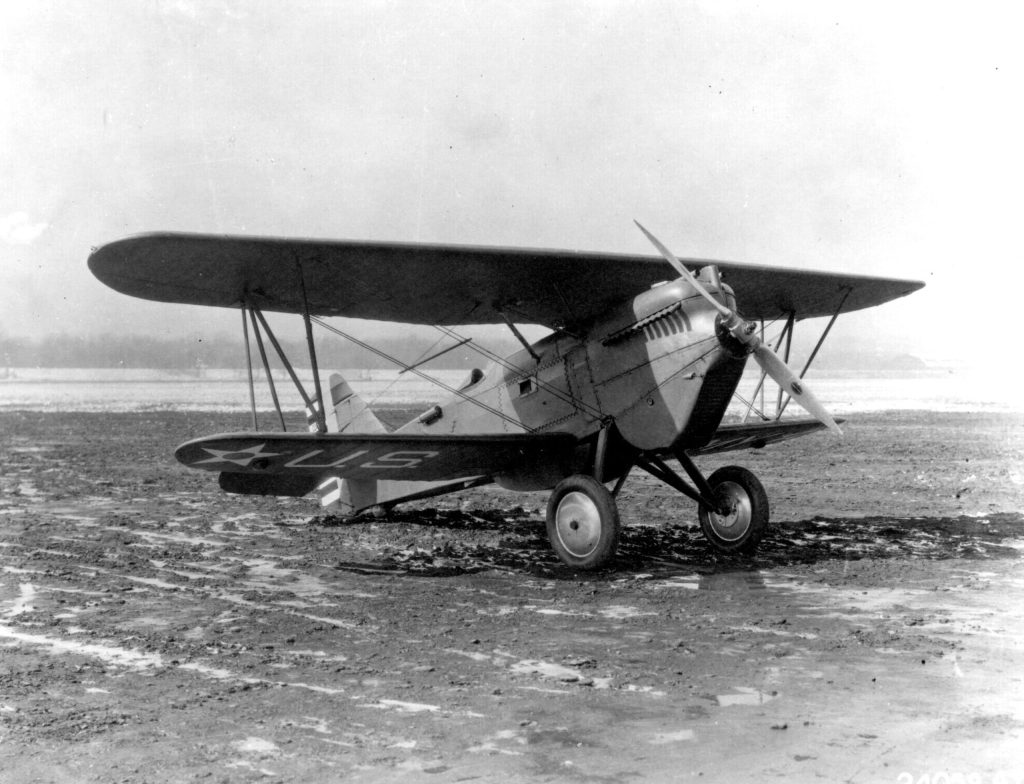
P-1 Hawk (Wiki Image).
The top fighter airplane in 1925 was the Curtiss P-1 Hawk. It was an American biplane fighter aircraft known for its speed, maneuverability, and firepower. The P-1 Hawk was one of the most advanced fighter aircraft of the mid-1920s, and the United States Army Air Service used it.
The P-1 Hawk was first flown in 1923 and entered service in the United States Army Air Service in 1925. It was powered by a single Curtiss D-12C V-12 engine, which gave it a top speed of over 175 mph. The P-1 Hawk was armed with two synchronized Browning machine guns and two Lewis machine guns mounted on the wings.
The P-1 Hawk was a very maneuverable aircraft, and it was able to outturn most other fighter aircraft of the time. It was also very durable, and it could withstand a lot of damage. The P-1 Hawk’s maneuverability, durability, and firepower made it a very effective fighter aircraft, and it was responsible for shooting down many enemy aircraft during the mid-1920s.
The P-1 Hawk remained in service with the United States Army Air Service until 1931. Air forces worldwide also used it, including the Japanese Army Air Force, the Argentine Air Force, and the Brazilian Air Force.
Here are some of the reasons why the Curtiss P-1 Hawk was considered the top fighter airplane in 1925:
- It was highly maneuverable, which made it difficult for enemy aircraft to shoot down.
- It was heavily armed, with four machine guns.
- It was relatively durable and could withstand a lot of damage.
- It was powered by a powerful engine, which gave it an excellent top speed.
- It was easy to produce and maintain.
The Curtiss P-1 Hawk was a truly remarkable aircraft. It was one of the most successful fighter aircraft of the mid-1920s, and it played a major role in the development of modern fighter aircraft.
While there were other excellent fighter aircraft in service in 1925, such as the Curtiss PW-8, the Gloster Gamecock II, and the Nieuport-Delage NiD 29, the P-1 Hawk was generally considered to be the best fighter aircraft of the year due to its combination of maneuverability, speed, firepower, and durability.
AI 1926 American Curtiss P-6E Hawk
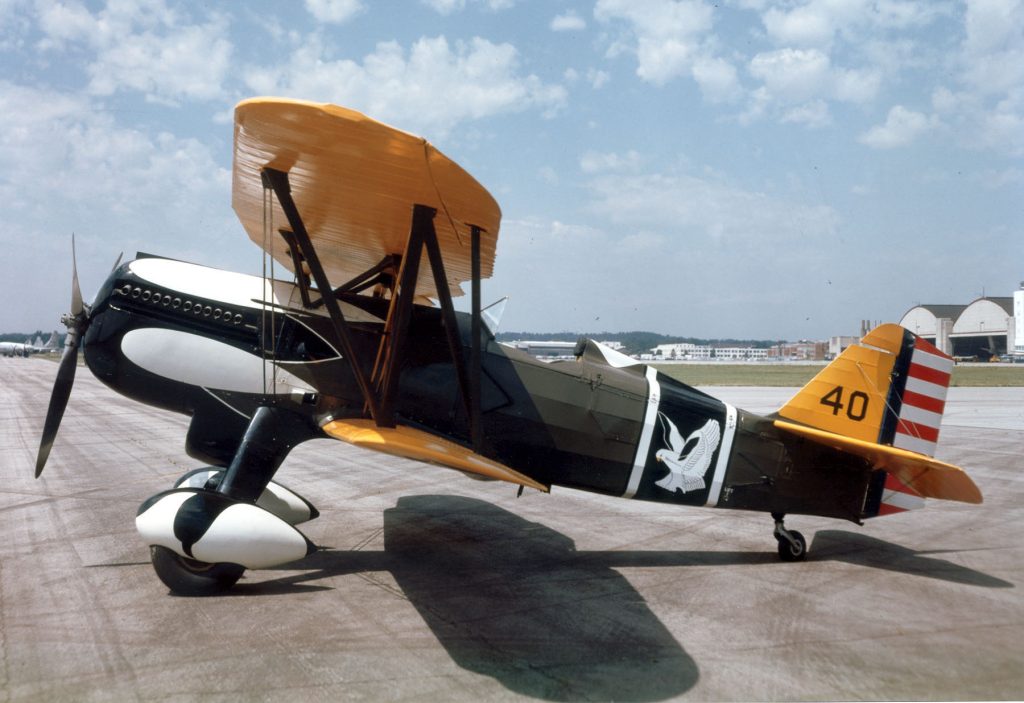
P-6E Hawk (Wiki Image).
The top fighter airplane in 1926 was the Curtiss P-6E Hawk. It was an American biplane fighter aircraft that was a development of the Curtiss P-1 Hawk. The P-6E Hawk was faster, more maneuverable, and more heavily armed than its predecessor.
The P-6E Hawk was first flown in 1926 and entered service in the United States Army Air Service in the same year. It was powered by a single Curtiss D-12C V-12 engine, which gave it a top speed of over 180 mph. The P-6E Hawk was armed with two synchronized Browning machine guns and two Lewis machine guns mounted on the wings.
The P-6E Hawk was a very maneuverable aircraft, and it was able to outturn most other fighter aircraft of the time. It was also very durable, and it could withstand a lot of damage. The P-6E Hawk’s maneuverability, durability, and firepower made it a very effective fighter aircraft, and it was responsible for shooting down many enemy aircraft during the late 1920s and early 1930s.
The P-6E Hawk remained in service with the United States Army Air Service until 1932. Air forces worldwide also used it, including the Japanese Army Air Force, the Argentine Air Force, and the Brazilian Air Force.
Here are some of the reasons why the Curtiss P-6E Hawk was considered the top fighter airplane in 1926:
- It was highly maneuverable, which made it difficult for enemy aircraft to shoot down.
- It was heavily armed, with four machine guns.
- It was relatively durable and could withstand a lot of damage.
- It was powered by a powerful engine, which gave it a good top speed.
- It was easy to produce and maintain.
The Curtiss P-6E Hawk was a truly remarkable aircraft. It was one of the most successful fighter aircraft of the late 1920s and early 1930s, and it played a major role in the development of modern fighter aircraft.
While there were other excellent fighter aircraft in service in 1926, such as the Curtiss PW-8, the Gloster Gamecock II, and the Nieuport-Delage NiD 29, the P-6E Hawk was generally considered to be the best fighter aircraft of the year, due to its combination of maneuverability, speed, firepower, and durability.
AI 1927 British Hawker Fury
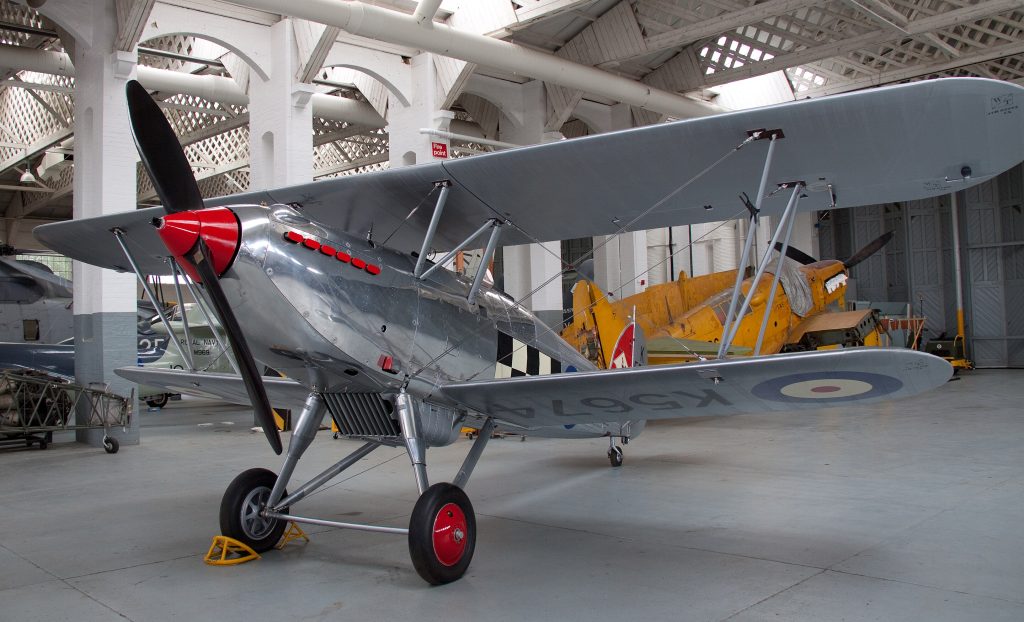
Fury (Wiki Image).
The top fighter airplane in 1927 was the Hawker Fury. It was a British biplane fighter aircraft known for its speed, maneuverability, and firepower. The Fury was one of the most advanced fighter aircraft of the late 1920s, and the Royal Air Force and other air forces worldwide used it.
The Fury was first flown in 1926 and entered the Royal Air Force service in 1927. It was powered by a single Rolls-Royce Kestrel IB V-12 engine, which gave it a top speed of over 200 mph. The Fury was armed with two synchronized Vickers machine guns and two Lewis machine guns mounted on the wings.
The Fury was a very maneuverable aircraft, and it was able to outturn most other fighter aircraft of the time. It was also very durable, and it could withstand a lot of damage. The Fury’s maneuverability, durability, and firepower made it a very effective fighter aircraft, and it was responsible for shooting down many enemy aircraft during the late 1920s and early 1930s.
The Fury remained in service with the Royal Air Force until 1937. Air forces worldwide also used it, including the Japanese Army Air Force, the Argentine Air Force, and the Brazilian Air Force.
Here are some of the reasons why the Hawker Fury was considered the top fighter airplane in 1927:
- It was highly maneuverable, which made it difficult for enemy aircraft to shoot down.
- It was heavily armed, with four machine guns.
- It was relatively durable and could withstand a lot of damage.
- It was powered by a powerful engine, which gave it a good top speed.
- It was easy to produce and maintain.
The Hawker Fury was a truly remarkable aircraft. It was one of the most successful fighter aircraft of the late 1920s and early 1930s, and it played a major role in the development of modern fighter aircraft.
Other notable fighter aircraft in service in 1927 include the Curtiss P-6E Hawk, the Gloster Gamecock II, and the Nieuport-Delage NiD 29. However, the Hawker Fury was generally considered the best fighter aircraft of the year due to its maneuverability, speed, firepower, and durability.
AI 1928 British Hawker Fury Mk. I
The top fighter airplane in 1928 was the Hawker Fury Mk. I. It was a British biplane fighter aircraft known for its speed, maneuverability, and firepower. The Fury Mk. I was one of the most advanced fighter aircraft of the late 1920s, and the Royal Air Force and other air forces worldwide used it.
The Fury Mk. I was first flown in 1927 and entered the Royal Air Force service in 1928. It was powered by a single Rolls-Royce Kestrel IB V-12 engine, which gave it a top speed of over 200 mph—the Fury Mk. I was armed with two synchronized Vickers machine guns and two Lewis machine guns mounted on the wings.
The Fury Mk. I was a very maneuverable aircraft that could outturn most other fighter aircraft. It was also very durable, and it could withstand a lot of damage. The Fury Mk. I’s maneuverability, durability, and firepower made it a very effective fighter aircraft, and it was responsible for shooting down many enemy aircraft during the late 1920s and early 1930s.
The Fury Mk. I remained in service with the Royal Air Force until 1937. Air forces worldwide also used it, including the Japanese Army Air Force, the Argentine Air Force, and the Brazilian Air Force.
Here are some of the reasons why the Hawker Fury Mk. I was considered the top fighter airplane in 1928:
- It was highly maneuverable, which made it difficult for enemy aircraft to shoot down.
- It was heavily armed, with four machine guns.
- It was relatively durable and could withstand a lot of damage.
- It was powered by a powerful engine, which gave it a good top speed.
- It was easy to produce and maintain.
The Hawker Fury Mk. I was a truly remarkable aircraft. It was one of the most successful fighter aircraft of the late 1920s and early 1930s, and it played a major role in the development of modern fighter aircraft.
Other notable fighter aircraft in service in 1928 include the Curtiss P-6E Hawk, the Gloster Gamecock II, and the Nieuport-Delage NiD 29—however, the Hawker Fury Mk. I was considered the best fighter aircraft of the year due to its maneuverability, speed, firepower, and durability.
AI 1929-31 American Boeing P-12
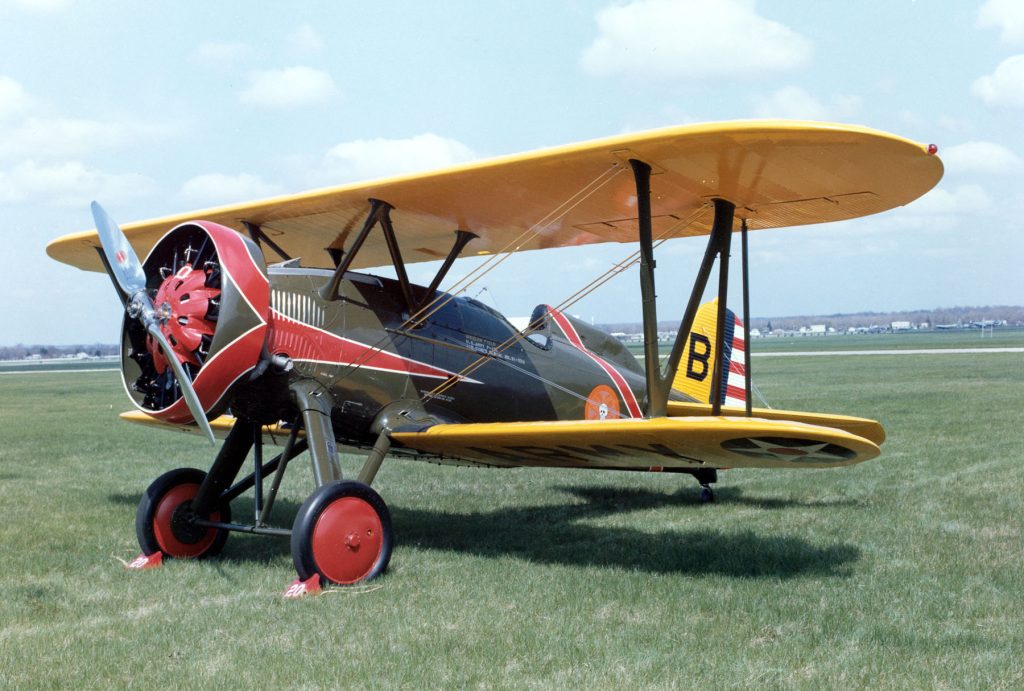
P-12E (Wiki Image).
The top fighter airplane in 1931 was the Boeing P-12E. It was an American biplane fighter aircraft known for its speed, maneuverability, and firepower. The P-12E was one of the most advanced fighter aircraft of the early 1930s, and the United States Army Air Corps and other air forces worldwide used it.
The P-12E was first flown in 1930 and entered service in the United States Army Air Corps in 1931. It was powered by a single Pratt & Whitney R-1340-21 Wasp radial engine, which gave it a top speed of over 220 mph. The P-12E was armed with two synchronized Browning machine guns and two Lewis machine guns mounted on the wings.
The P-12E was a very maneuverable aircraft, and it was able to outturn most other fighter aircraft of the time. It was also relatively durable, and it could withstand a lot of damage. The P-12E’s maneuverability, durability, and firepower made it a very effective fighter aircraft, and it was responsible for shooting down many enemy aircraft during the early 1930s.
The P-12E remained in service with the United States Army Air Corps until 1937. Air forces worldwide also used it, including the Colombian Air Force, the Chilean Air Force, and the Peruvian Air Force.
Here are some of the reasons why the Boeing P-12E was considered the top fighter airplane in 1931:
- It was highly maneuverable, which made it difficult for enemy aircraft to shoot down.
- It was heavily armed, with four machine guns.
- It was relatively durable and could withstand a lot of damage.
- It was powered by a powerful engine, which gave it a good top speed.
- It was easy to produce and maintain.
The Boeing P-12E was a truly remarkable aircraft. It was one of the most successful fighter aircraft of the early 1930s, and it played a major role in the development of modern fighter aircraft.
Other notable fighter aircraft in service in 1931 include the Hawker Fury Mk. III, the Curtiss P-6E Hawk, and the Gloster Gamecock II. However, the Boeing P-12E was considered the best fighter aircraft of the year due to its maneuverability, speed, firepower, and durability.
AI 1932-34 American Boeing Peashooter
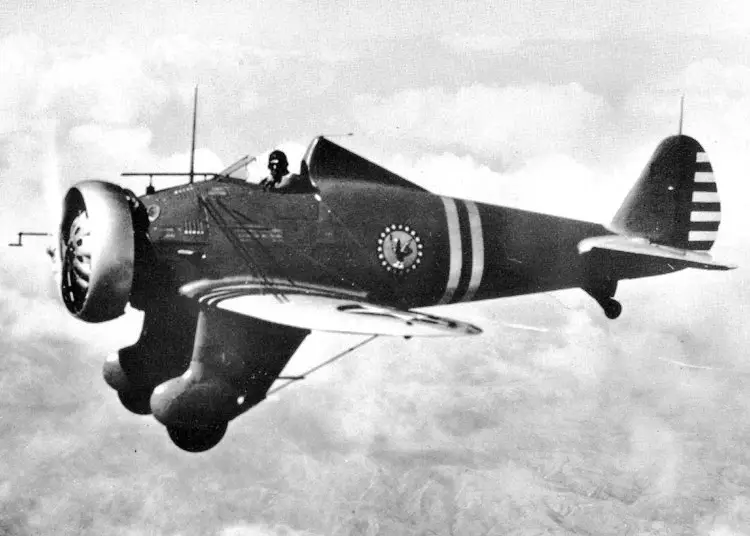
P-26 “Peashooter” (Wiki Image).
The top fighter airplane in 1932 was the Boeing P-26 Peashooter. It was an American biplane fighter aircraft known for its speed, maneuverability, and firepower. The P-26 was one of the most advanced fighter aircraft of the early 1930s, and the United States Army Air Corps and other air forces worldwide used it.
The P-26 was first flown in 1932 and entered service in the United States Army Air Corps in the same year. It was powered by a single Pratt & Whitney R-1340-27 Wasp radial engine, which gave it a top speed of over 230 mph. The P-26 was armed with two synchronized Browning machine guns and two Lewis machine guns mounted on the wings.
The P-26 was a very maneuverable aircraft that could outturn most other fighter aircraft. It was also relatively durable, and it could withstand a lot of damage. The P-26’s maneuverability, durability, and firepower made it a very effective fighter aircraft, and it was responsible for shooting down many enemy aircraft during the early and mid-1930s.
The P-26 remained in service with the United States Army Air Corps until 1941. Air forces worldwide also used it, including the Chinese Air Force, the Philippine Air Force, and the Thai Air Force.
Here are some of the reasons why the Boeing P-26 Peashooter was considered the top fighter airplane in 1932:
- It was highly maneuverable, which made it difficult for enemy aircraft to shoot down.
- It was heavily armed, with four machine guns.
- It was relatively durable and could withstand a lot of damage.
- It was powered by a powerful engine, which gave it a good top speed.
- It was easy to produce and maintain.
The Boeing P-26 Peashooter was a truly remarkable aircraft. It was one of the most successful fighter aircraft of the early and mid-1930s, and it played a major role in the development of modern fighter aircraft.
Other notable fighter aircraft in service in 1932 include the Hawker Fury Mk. IV, the Curtiss P-6E Hawk, and the Gloster Gamecock II. However, the Boeing P-26 Peashooter was considered the best fighter aircraft of the year due to its maneuverability, speed, firepower, and durability.
AI 1935 British Hawker Hurricane
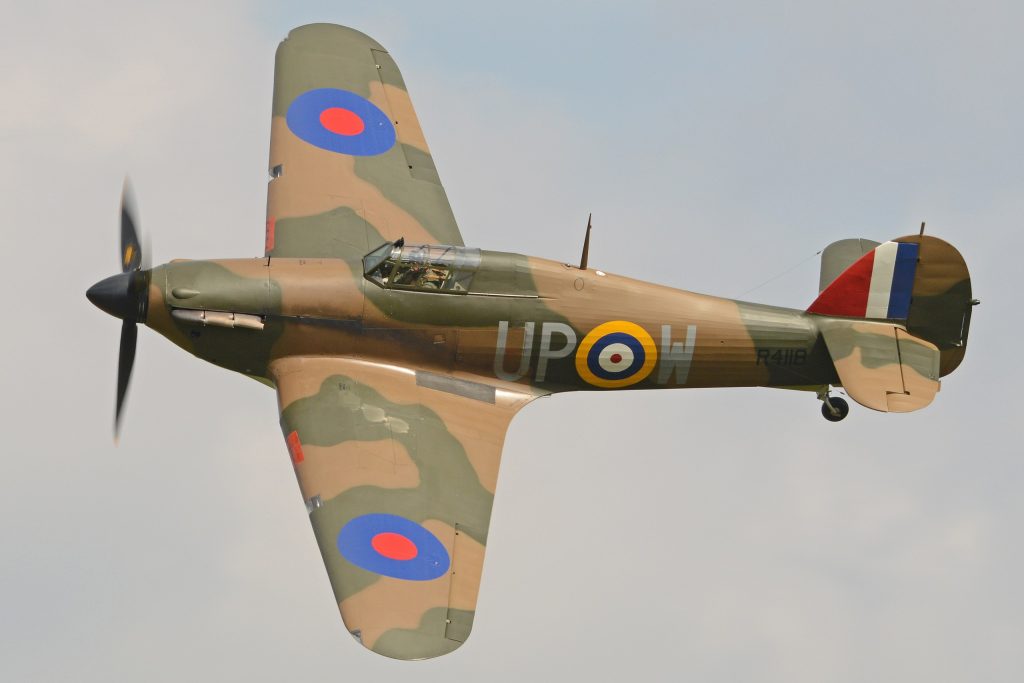
Hurricane (Wiki Image).
The top fighter airplane in 1935 was the Hawker Hurricane. It was a British single-seat monoplane fighter aircraft known for its speed, maneuverability, and firepower. The Hurricane was one of the most advanced fighter aircraft of the mid-1930s, and it played a major role in the Battle of Britain during World War II.
The Hurricane was first flown in 1935 and entered service with the Royal Air Force in 1937. It was powered by a single Rolls-Royce Merlin III engine, which gave it a top speed of over 300 mph. The Hurricane was armed with eight .303-inch Browning machine guns mounted in the wings.
The Hurricane was a very maneuverable aircraft that could outturn most other fighter aircraft. It was also relatively durable, and it could withstand a lot of damage. The Hurricane’s maneuverability, durability, and firepower made it a very effective fighter aircraft, and it was responsible for shooting down many enemy aircraft during the Battle of Britain.
The Hurricane remained in service with the Royal Air Force until 1944. Air forces worldwide also used it, including the Soviet Air Force, the Canadian Air Force, and the Australian Air Force.
Here are some of the reasons why the Hawker Hurricane was considered the top fighter airplane in 1935:
- It was highly maneuverable, which made it difficult for enemy aircraft to shoot down.
- It was heavily armed, with eight machine guns.
- It was relatively durable and could withstand a lot of damage.
- It was powered by a powerful engine, which gave it a good top speed.
- It was easy to produce and maintain.
The Hawker Hurricane was a truly remarkable aircraft. It was one of the most successful fighter aircraft of the mid-1930s and the early years of World War II, and it played a major role in the development of modern fighter aircraft.
Other notable fighter aircraft in service in 1935 include the Boeing P-26A Peashooter, the Messerschmitt Bf 109B, and the Polikarpov I-16. However, the Hawker Hurricane was considered the best fighter aircraft of the year due to its maneuverability, speed, firepower, and durability.
AI 1936 German Messerschmitt Bf 109B
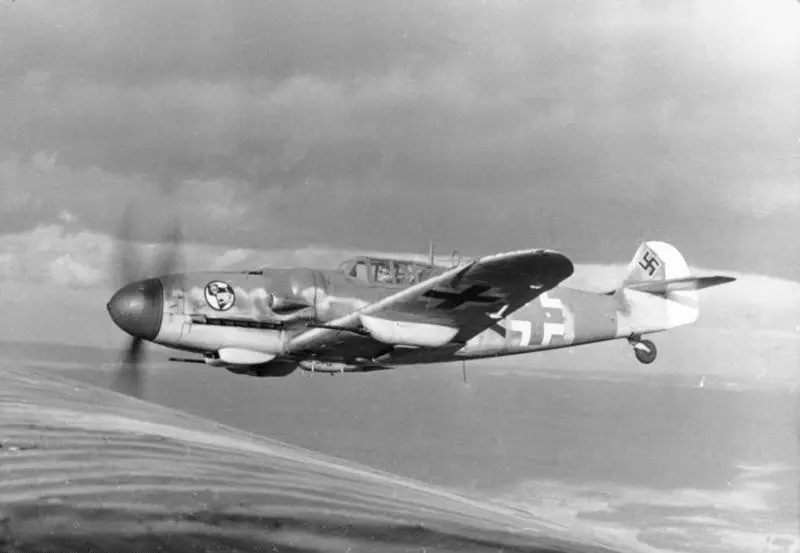
Bf 109 (Wiki Image).
The top fighter airplane in 1936 was the Messerschmitt Bf 109B. It was a German single-seat monoplane fighter aircraft known for its speed, maneuverability, and firepower. The Bf 109B was one of the most advanced fighter aircraft of the mid-1930s, and it played a major role in the Spanish Civil War and the early years of World War II.
The Bf 109B was first flown in 1935 and entered service with the Luftwaffe in 1936. A single Daimler-Benz DB 601A powered its inverted V12 engine, which gave it a top speed of over 320 mph. The Bf 109B was armed with two 7.92 mm MG 17 machine guns and two 20 mm MG FF cannons mounted in the wings.
The Bf 109B was a very maneuverable aircraft, and it was able to outturn most other fighter aircraft of the time. It was also relatively durable, and it could withstand a lot of damage. The Bf 109B’s maneuverability, durability, and firepower made it a very effective fighter aircraft, and it was responsible for shooting down many enemy aircraft during the Spanish Civil War and the early years of World War II.
The Bf 109B remained in service with the Luftwaffe until 1941. Air forces worldwide also used it, including the Hungarian Air Force, the Romanian Air Force, and the Croatian Air Force.
Here are some of the reasons why the Messerschmitt Bf 109B was considered the top fighter airplane in 1936:
- It was highly maneuverable, which made it difficult for enemy aircraft to shoot down.
- It was heavily armed, with two machine guns and two cannons.
- It was relatively durable and could withstand a lot of damage.
- It was powered by a powerful engine, which gave it a good top speed.
- It was easy to produce and maintain.
The Messerschmitt Bf 109B was a truly remarkable aircraft. It was one of the most successful fighter aircraft of the mid-1930s and the early years of World War II, and it played a major role in the development of modern fighter aircraft.
Other notable fighter aircraft in service in 1936 include the Hawker Hurricane, the Boeing P-26A Peashooter, and the Polikarpov I-16. However, the Messerschmitt Bf 109B was generally considered the best fighter aircraft of the year due to its maneuverability, speed, firepower, and durability.
AI 1937-41 British Supermarine Spitfire
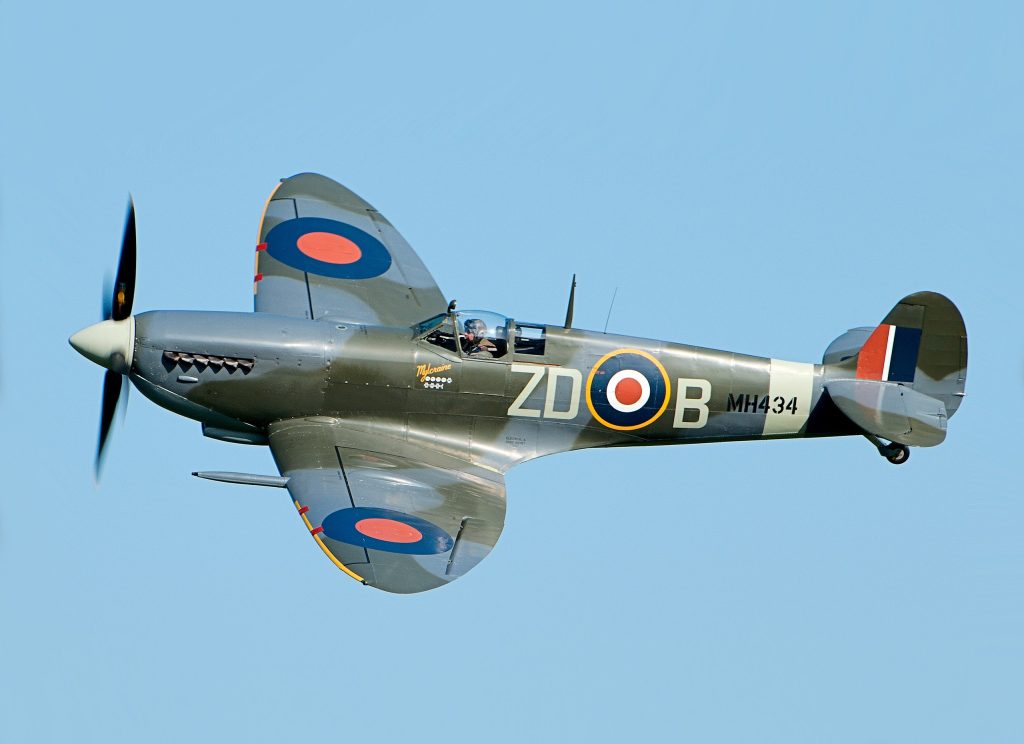
Spitfire (Wiki Image).
The top fighter airplane in 1937-41 was the Supermarine Spitfire Mk. I. It was a single-engine, monoplane fighter aircraft known for its speed, maneuverability, and firepower. The Spitfire was the main fighter aircraft of the Royal Air Force (RAF) during the Battle of Britain, and it played a major role in the Allied victory in that battle.
The Spitfire Mk. I was powered by a Rolls-Royce Merlin III engine, which gave it a top speed of over 350 mph. It was armed with eight .303 machine guns. The Spitfire Mk. I was a very maneuverable aircraft that could outturn most other fighter aircraft. It was also relatively durable, and it could withstand a lot of damage.
The Spitfire Mk. I was superior to most other fighter aircraft in 1937-41. It was faster, more maneuverable, and more heavily armed than most other fighter aircraft. The Spitfire Mk. I also had a relatively long range, which made it ideal for escorting bombers on long-range missions.
Other notable fighter aircraft in service in 1937-41 include the Messerschmitt Bf 109E, the Yak-1, and the P-40 Warhawk. However, the Supermarine Spitfire Mk. I was considered the best fighter aircraft in service in 1937-41 due to its speed, maneuverability, firepower, and range combination.
The Spitfire Mk. I remained in service with the RAF until 1945. Air forces worldwide also used it, including the Soviet Air Force and the United States Army Air Forces.
The Spitfire Mk. I was a remarkable aircraft that played a major role in the Allied victory in World War II. It is still considered one of the greatest fighter aircraft ever built.
Here are some of the reasons why the Supermarine Spitfire Mk. I was the top fighter airplane in 1937-41:
- It was very fast and maneuverable. The Spitfire had a top speed of over 350 mph, faster than most other fighter aircraft. It was also very maneuverable and could outturn most other fighter aircraft.
- It was heavily armed. The Spitfire was armed with eight .303 machine guns. This gave it a significant firepower advantage over most other fighter aircraft of the time.
- It was relatively durable. The Spitfire was built of a lightweight but strong aluminum alloy. This made it relatively durable, and it could withstand a lot of damage.
- It was well-designed. The Spitfire was a very well-designed aircraft. It was easy to fly and maintain, and it was very reliable.
The Supermarine Spitfire Mk. I am a truly iconic aircraft, and it is still considered one of the greatest fighter aircraft ever built. It played a major role in the Allied victory in World War II and helped shape the development of modern fighter aircraft.
AI 1942 German Focke-Wulf Fw 190
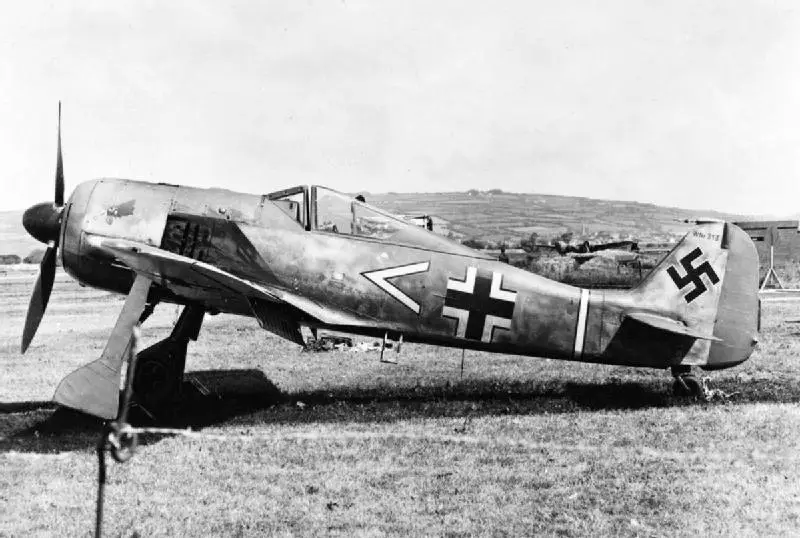
Fw 190 (Wiki Image).
The top fighter airplane in 1942 was the Focke-Wulf Fw 190. It was a single-engine, monoplane fighter aircraft known for its speed, maneuverability, and firepower. The Fw 190 was the main fighter aircraft of the Luftwaffe during the Battle of Stalingrad, and it played a major role in the German victory in that battle.
The Fw 190 was powered by a BMW 801 radial engine, which gave it a top speed of over 400 mph. It was armed with two 20 mm cannons and four 7.92 mm machine guns. The Fw 190 was a very maneuverable aircraft, and it was able to outturn most other fighter aircraft of the time. It was also relatively durable, and it could withstand a lot of damage.
The Fw 190 was superior to most other fighter aircraft in 1942. It was faster, more maneuverable, and more heavily armed than most other fighter aircraft. The Fw 190 also had a relatively long range, which made it ideal for escorting bombers on long-range missions.
Other notable fighter aircraft in service in 1942 include the Supermarine Spitfire Mk. V, the Messerschmitt Bf 109F, and the P-40 Warhawk. However, the Focke-Wulf Fw 190 was considered the best fighter aircraft in 1942 due to its speed, maneuverability, firepower, and range combination.
The Fw 190 remained in service with the Luftwaffe until the end of World War II. Air forces worldwide also used it, including the Hungarian Air Force and the Bulgarian Air Force.
The Fw 190 was a remarkable aircraft that played a major role in the Luftwaffe’s successes in the early years of World War II. It is still considered one of the greatest fighter aircraft ever built.
AI 1943-46 American North American in P-51D Mustang
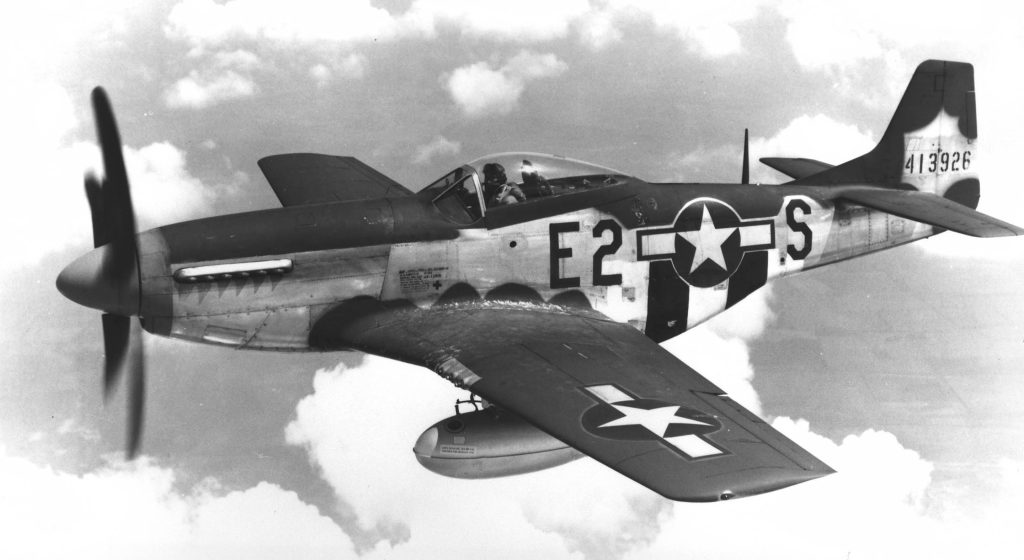
P-51 Mustang (Wiki image).
The top fighter airplane in 1943-46 was the North American P-51D Mustang. It was a single-engine, long-range fighter aircraft known for its speed, maneuverability, and range. The P-51D Mustang significantly improved over the original P-51A Mustang, with a more powerful engine, several other design changes, and a new wing that could be armed with various weapons.
The P-51D Mustang was first flown in 1942 and entered service with the United States Army Air Forces in 1943. It was powered by a single Rolls-Royce Merlin 66 engine, which gave it a top speed of over 430 mph. The P-51D Mustang could have various weapons, including six .50-caliber machine guns or four 20 mm cannons.
The P-51D Mustang was a very maneuverable aircraft, and it could outturn most other fighter aircraft of the time. It was also relatively durable, and it could withstand a lot of damage. The P-51D Mustang’s maneuverability, durability, and firepower made it a very effective fighter aircraft, and it was responsible for shooting down many enemy aircraft during World War II.
The P-51D Mustang remained in service with the United States Army Air Forces until 1945. Air forces worldwide also used it, including the Royal Air Force, the Canadian Air Force, and the Australian Air Force.
Other notable fighter aircraft in service in 1943-1946 include the Supermarine Spitfire Mk. IX, the Focke-Wulf Fw 190D-9, and the Messerschmitt Me 262. However, the North American P-51D Mustang was generally considered the best fighter aircraft of the period due to its speed, maneuverability, firepower, durability, range, and availability.
Here are some of the reasons why the North American P-51D Mustang was considered the top fighter airplane in 1943-1946:
- It was highly maneuverable, which made it difficult for enemy aircraft to shoot down.
- It was heavily armed, with various weapons to choose from.
- It was relatively durable and could withstand a lot of damage.
- It was powered by a powerful engine, which gave it a good top speed.
- It had a long-range, which allowed it to escort bombers deep into enemy territory.
- It was widely available, with over 15,000 P-51Ds being produced during the war.
The North American P-51D Mustang was a truly remarkable aircraft. It was one of World War II’s most successful fighter aircraft and played a major role in the Allied victory.
AI 1947-56 American North American in F-86 Sabre
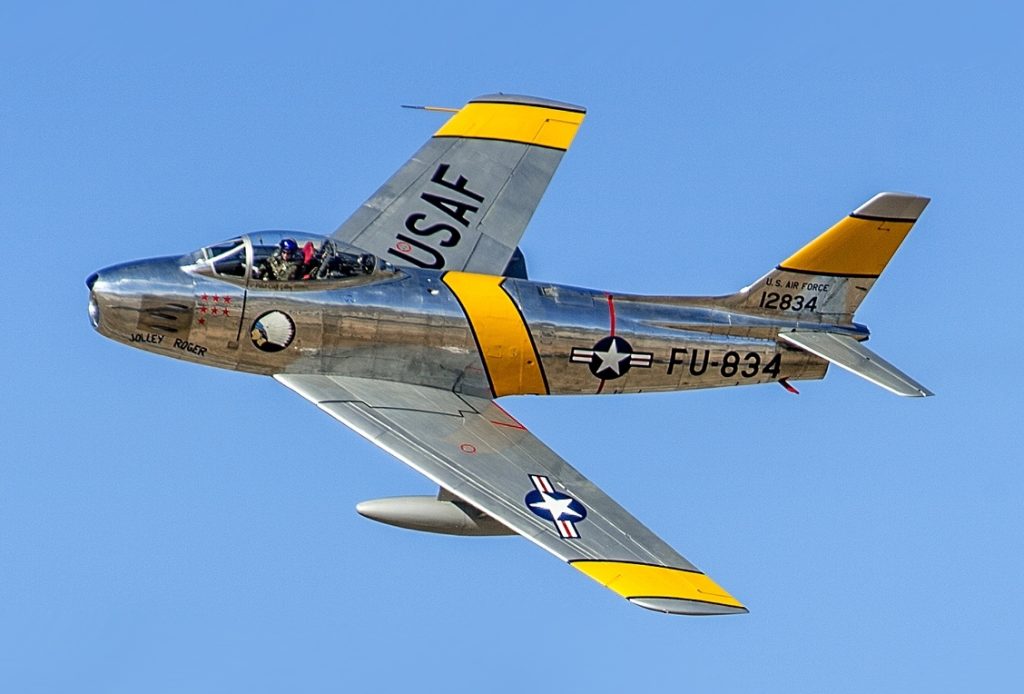
F-86 Sabre (Wiki Image).
The top fighter airplane in 1947-56 was the North American F-86 Sabre. It was a single-engine, jet-powered fighter aircraft known for its speed, maneuverability, and armament. The F-86 Sabre significantly improved over the previous generation of propeller-driven fighter aircraft, and it was one of the first jet fighters to enter widespread service.
The F-86 Sabre was first flown in 1947 and entered service with the United States Air Force in 1949. It was powered by a single General Electric J47 turbojet engine, which gave it a top speed of over 670 mph. The F-86 Sabre could be armed with various weapons, including six .50-caliber machine guns or four 20 mm cannons.
The F-86 Sabre was a very maneuverable aircraft, and it was able to outturn most other fighter aircraft of the time. It was also relatively durable, and it could withstand a lot of damage. The F-86 Sabre’s maneuverability, durability, and armament made it a very effective fighter aircraft and played a major role in the Korean War.
The F-86 Sabre remained in service with the United States Air Force until 1957. Air forces worldwide also used it, including the Royal Air Force, the Canadian Air Force, and the Australian Air Force.
Other notable fighter aircraft in service in 1947-56 include the Mikoyan-Gurevich MiG-15, the Supermarine Attacker, and the Hawker Hunter. However, the North American F-86 Sabre was generally considered the best fighter aircraft of the year due to its speed, maneuverability, armament, and availability.
The F-86 Sabre was a remarkable aircraft that played a major role in developing modern fighter aircraft.
Here are some of the reasons why the North American F-86 Sabre was considered the top fighter airplane in 1947-56:
- It was the fastest fighter aircraft in the world for most of that period.
- It was highly maneuverable and could outturn most other fighter aircraft of the time.
- It was heavily armed and could carry a variety of different weapons.
- It had a relatively long range, which made it ideal for escorting bombers on long-range missions.
- It was widely available, with over 6,000 F-86 Sabres being produced then.
AI 1957-59 American North American F-100 Super Sabre
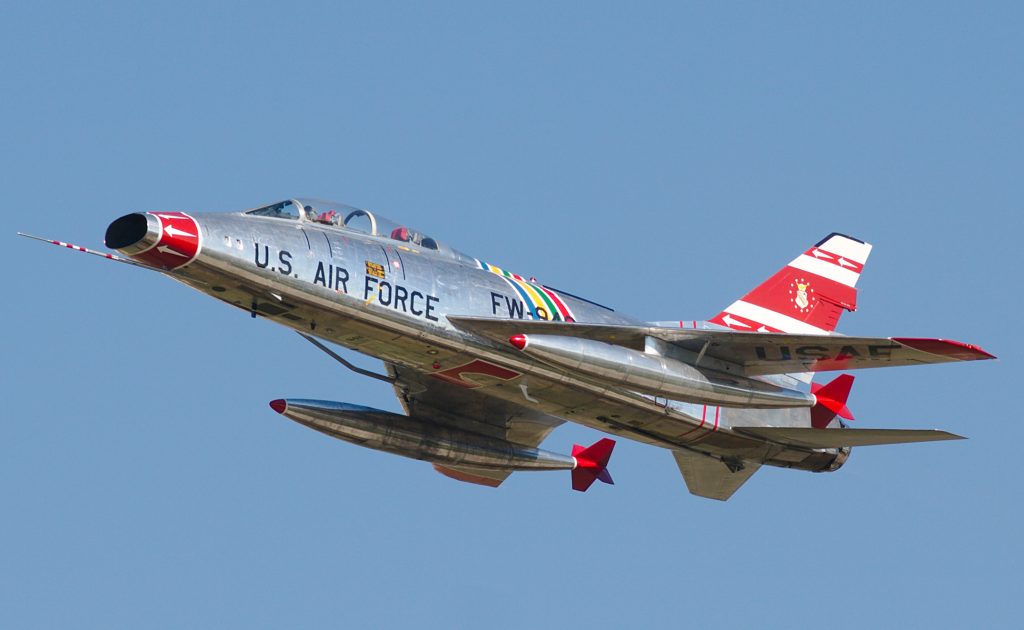
F-100 Super Sabre (Wiki Image).
The top fighter airplane in 1957-59 was the North American F-100 Super Sabre. It was a single-engine, jet-powered fighter aircraft known for its speed, maneuverability, and armament. The F-100 Super Sabre was the first American supersonic jet fighter capable of supersonic speed in level flight. It was also the first fighter aircraft designed specifically for the air superiority role.
The F-100 Super Sabre was powered by a Pratt & Whitney J57 turbojet engine, which gave it a top speed of over 800 mph. It was armed with various weapons, including six .50-caliber machine guns or four 20 mm cannons. It could also carry a variety of air-to-air missiles, such as the AIM-9 Sidewinder and the AIM-7 Sparrow.
The F-100 Super Sabre was a very maneuverable aircraft, and it was able to outturn most other fighter aircraft of the time. It was also relatively durable, and it could withstand a lot of damage. The F-100 Super Sabre’s maneuverability, durability, and armament made it a very effective fighter aircraft and played a major role in the Vietnam War.
In 1957-59, the F-100 Super Sabre was the best fighter aircraft in the world. It was faster, more maneuverable, and more heavily armed than any other fighter aircraft at the time. The F-100 Super Sabre also had a long range, which made it ideal for escorting bombers on long-range missions.
The F-100 Super Sabre remained in service with the United States Air Force until 1979. Air forces worldwide also used it, including the Turkish Air Force, the Republic of China Air Force, and the French Air Force.
Other notable fighter aircraft in service in 1957-59 include the Mikoyan-Gurevich MiG-19, the Dassault Mirage III, and the English Electric Lightning. However, the North American F-100 Super Sabre was generally considered the best fighter aircraft of the year due to its speed, maneuverability, armament, and availability.
The F-100 Super Sabre was a remarkable aircraft that played a major role in developing modern fighter aircraft. It was the first fighter aircraft to be equipped with a pulse-doppler radar and the first fighter aircraft to be equipped with an internal gun pod. The F-100 Super Sabre set the standard for future generations of fighter aircraft.
AI 1960-73 American McDonnell Douglas F-4 Phantom II
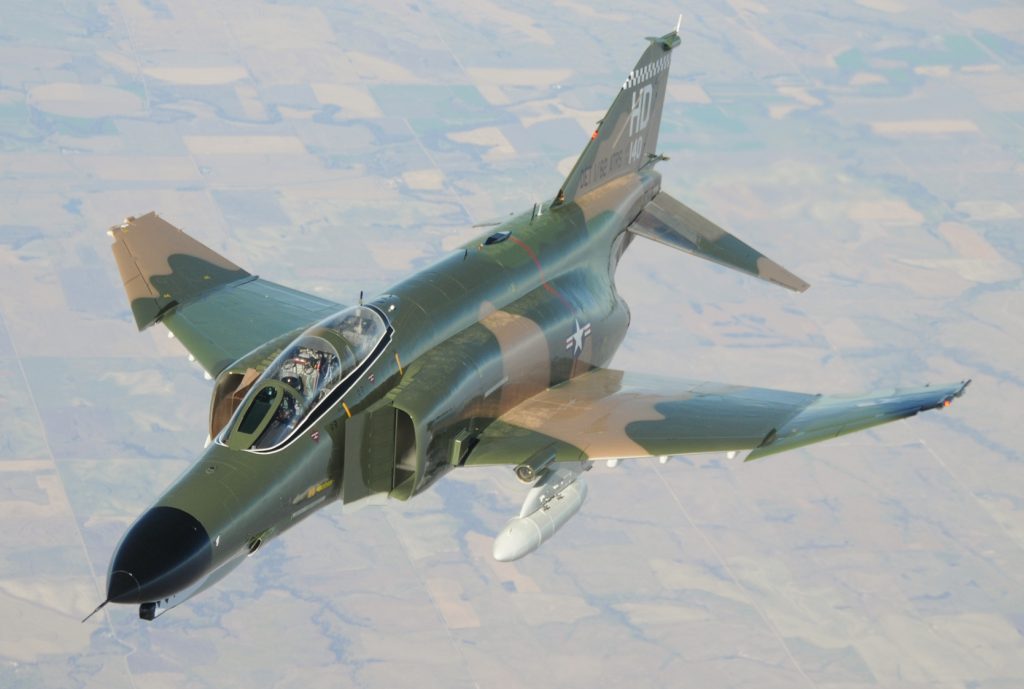
F-4 Phantom II (Wiki Image).
The top fighter airplane in 1961-73 was the McDonnell Douglas F-4 Phantom II. It was a twin-engine, supersonic jet fighter aircraft known for its speed, range, and armament. The F-4 Phantom II was the most widely used fighter aircraft of the Vietnam War, and it remained in service with the United States Air Force and Navy until the late 1990s.
The F-4 Phantom II was powered by two General Electric J79 turbojet engines, which gave it a top speed of over 1,600 mph. It had a combat radius of over 500 miles and could carry various weapons, including four 20 mm cannons, 12 AIM-9 Sidewinder air-to-air missiles, and four AGM-12 Bullpup air-to-ground missiles.
The F-4 Phantom II was a versatile aircraft that could be used for various missions, including air superiority, ground attack, and reconnaissance. It was also a very durable aircraft that could withstand much damage.
In 1961-73, the F-4 Phantom II was the best fighter aircraft in the world. It was faster, more maneuverable, and more heavily armed than any other fighter aircraft at the time. The F-4 Phantom II also had a long range, which made it ideal for escorting bombers on long-range missions.
The F-4 Phantom II remained in service with the United States Air Force and Navy until the late 1990s. Air forces worldwide also used it, including the Israeli Air Force, the Royal Air Force, and the Australian Air Force.
Other notable fighter aircraft in service in 1961-73 include the Mikoyan-Gurevich MiG-21, the North American F-104 Starfighter, and the Dassault Mirage III. However, the McDonnell Douglas F-4 Phantom II was generally considered the best fighter aircraft of the period due to its speed, range, armament, and versatility.
Here are some of the reasons why the McDonnell Douglas F-4 Phantom II was the top fighter airplane in 1961-73:
- It was the fastest fighter aircraft in the world.
- It had a long range.
- It was heavily armed.
- It was versatile.
- It was durable.
- It was widely available.
The McDonnell Douglas F-4 Phantom II is a truly iconic aircraft, still considered one of the greatest fighter aircraft ever built.
AI 1974-75 American Grumman F-14 Tomcat
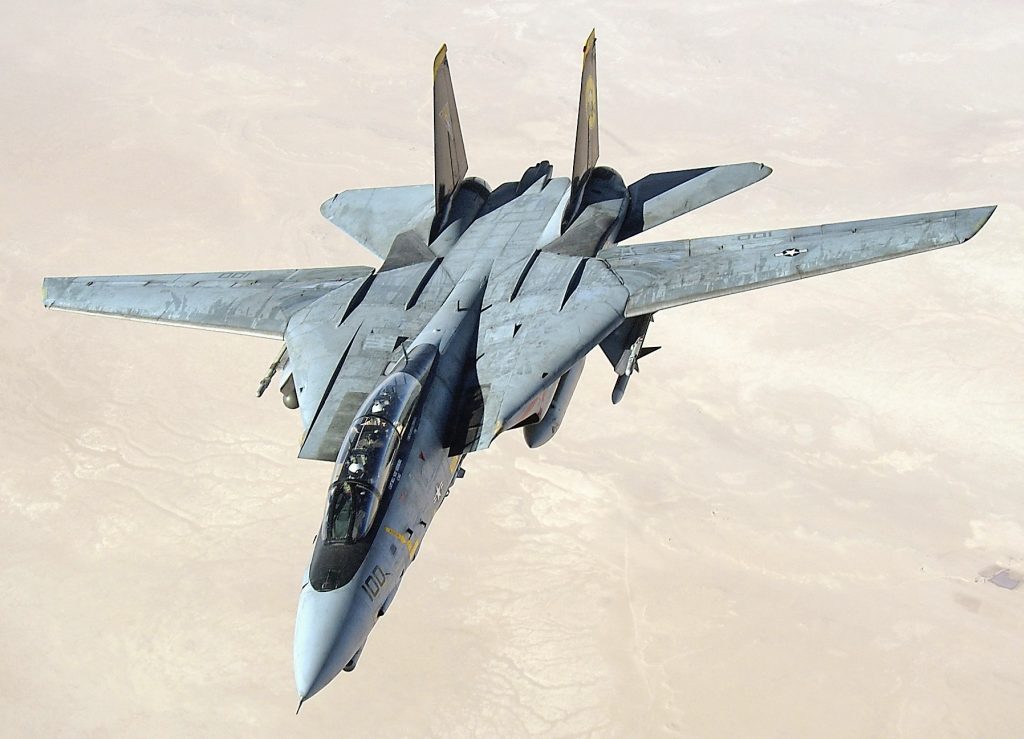
F-14 Tomcat (Wiki Image).
The top fighter airplane in 1974-75 was the Grumman F-14 Tomcat. It was a twin-engine, variable-sweep wing fighter aircraft known for its speed, range, and armament. The F-14 Tomcat was the first fighter aircraft to be equipped with the Hughes AIM-54 Phoenix long-range air-to-air missile, which gave it a significant advantage over other fighter aircraft of the time.
The F-14 Tomcat was powered by two General Electric TF30 turbofan engines, which gave it a top speed of over 1,500 mph. It had a combat radius of over 500 miles and could carry various weapons, including four 20 mm cannons, six AIM-9 Sidewinder air-to-air missiles, and up to six AIM-54 Phoenix air-to-air missiles.
The F-14 Tomcat was a versatile aircraft that could be used for various missions, including air superiority, fleet defense, and ground attack. It was also a very durable aircraft that could withstand much damage.
In 1974-75, the F-14 Tomcat was the best fighter aircraft in the world. It was faster, more maneuverable, and more heavily armed than any other fighter aircraft. The F-14 Tomcat also had a long range, which made it ideal for escorting bombers on long-range missions.
The F-14 Tomcat remained in service with the United States Navy until 2006. It was also used by the Iranian Air Force, which acquired 80 F-14 Tomcats before the Iranian Revolution 1979.
Other notable fighter aircraft in service in 1974-75 include the McDonnell Douglas F-4 Phantom II, the Mikoyan-Gurevich MiG-23, and the Dassault Mirage F.1. However, the Grumman F-14 Tomcat was generally considered to be the best fighter aircraft of the year, due to its combination of speed, range, armament, and versatility.
The F-14 Tomcat was a truly remarkable aircraft, and it is still considered to be one of the greatest fighter aircraft ever built. It played a major role in developing modern fighter aircraft and remains a popular subject among aviation enthusiasts and filmmakers alike.
AI 1976-94 American McDonnell Douglas F-15 Eagle
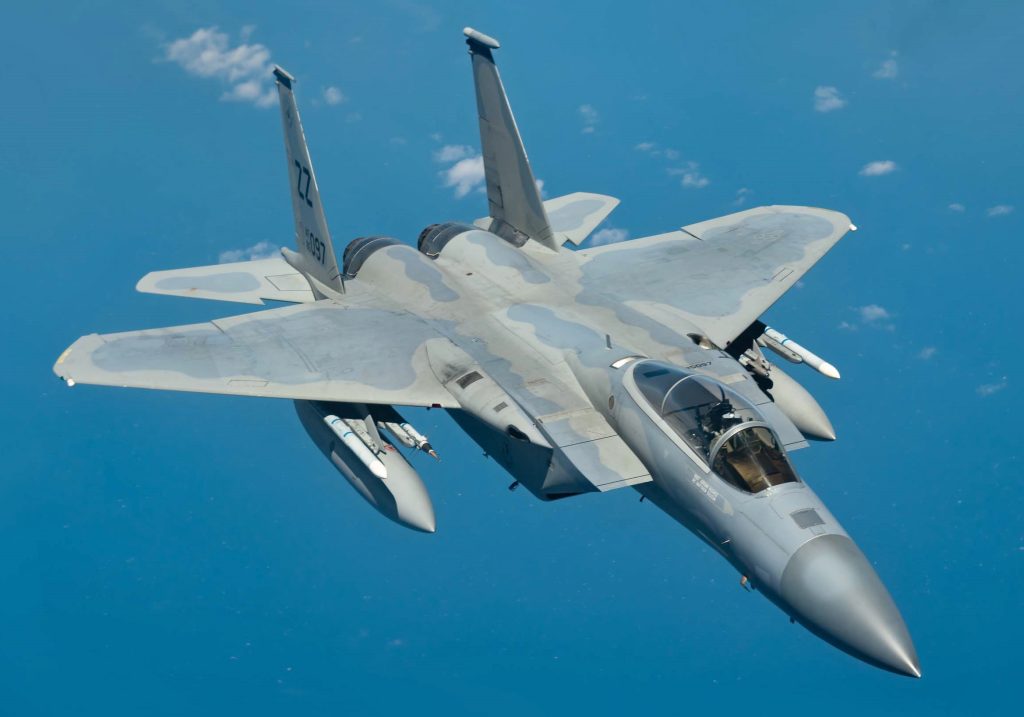
F-15 Eagle (Wiki Image).
The top fighter airplane in 1976-94 was the McDonnell Douglas F-15 Eagle. It was a twin-engine, all-weather air superiority fighter known for its speed, maneuverability, and armament. The F-15 Eagle was the first fighter aircraft to be equipped with an advanced air-to-air radar system and the first fighter aircraft to be equipped with a pulse-doppler radar.
The F-15 Eagle was powered by two Pratt & Whitney F100 turbofan engines, which gave it a top speed of over 1,600 mph. It had a combat radius of over 500 miles and could carry various weapons, including four 20 mm cannons, six AIM-9 Sidewinder air-to-air missiles, and up to six AIM-7 Sparrow air-to-air missiles.
The F-15 Eagle was a capable fighter aircraft unmatched in air-to-air combat. It had a high thrust-to-weight ratio, which gave it excellent maneuverability. The F-15 Eagle also had a very advanced radar system, which enabled it to detect and track enemy aircraft at long range.
The F-15 Eagle entered service with the United States Air Force in 1976 and remains in service today. The United States Air Force has used it in several combat operations, including the Gulf War, the War on Terror, and the Libyan Civil War. The F-15 Eagle has also been used by air forces worldwide, including the Israeli Air Force, the Royal Saudi Air Force, and the Japanese Air Force.
Other notable fighter aircraft in service in 1976-94 include the Grumman F-14 Tomcat, the Mikoyan-Gurevich MiG-29, and the Dassault Mirage 2000. However, the McDonnell Douglas F-15 Eagle was generally considered the best fighter aircraft of the year due to its speed, range, armament, and radar technology combination.
The F-15 Eagle is a remarkable aircraft, still considered one of the greatest fighter aircraft ever built. It is a testament to the engineering and design of the aircraft that it remains in service today, over 40 years after it was first introduced.
It is important to note that the Lockheed Martin F-22 Raptor entered service in 1995 but was not in service for most of the 1976-1994 period. The F-22 Raptor is a fifth-generation fighter aircraft that is even more advanced and capable than the F-15 Eagle.
AI 1995-2024 American Lockheed Martin F-22 Raptor
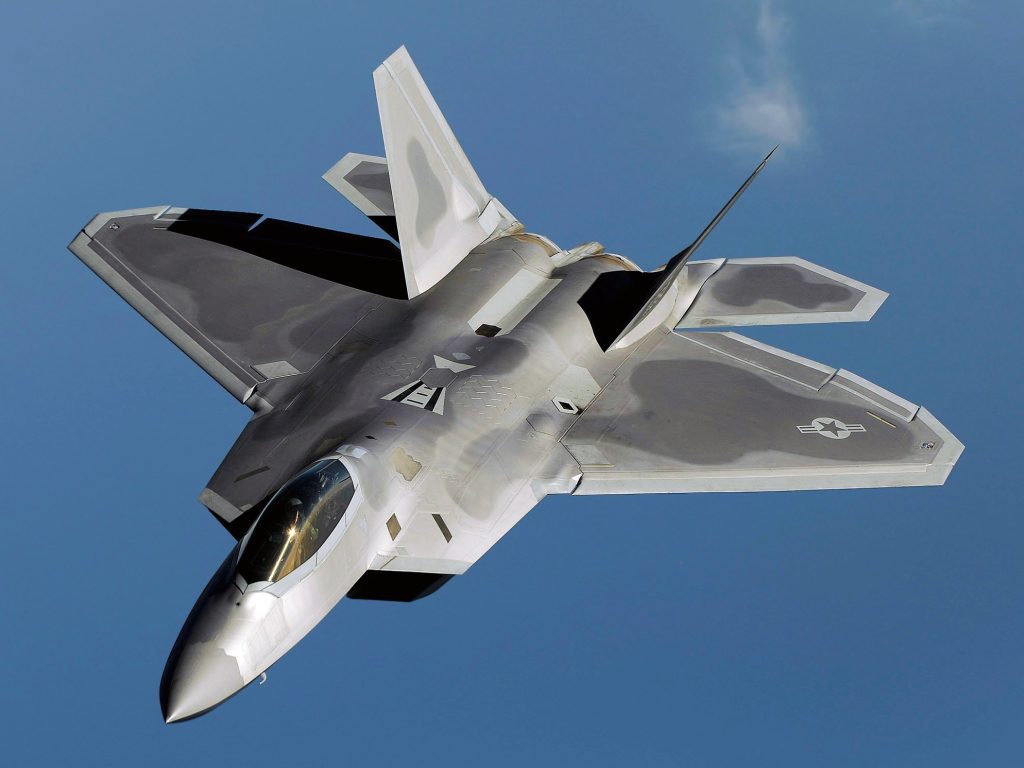
F-22 Raptor (Wiki image).
The top fighter airplane in 1995 and 2024 is the Lockheed Martin F-22 Raptor. It is still the most advanced and capable fighter aircraft in the world in terms of performance, technology, and versatility.
The F-22 Raptor is a fifth-generation fighter aircraft designed for air superiority. It is stealthy, supercruises (flies at supersonic speeds without using afterburners), and has an advanced radar system that can detect and track enemy aircraft at long range. The F-22 Raptor is also very maneuverable and can carry various weapons, including air-to-air missiles, air-to-ground missiles, and bombs.
No other fighter aircraft in service in either 1995 or 2024 could match the F-22 Raptor in terms of performance and technology. The F-22 Raptor remains in service with the United States Air Force today and is expected to remain in service for many years.
Here are some of the key features of the F-22 Raptor:
- Stealth: The F-22 Raptor is designed to be stealthy, meaning it is difficult to detect by radar and other sensors. This is achieved through a combination of shaping, materials, and coatings.
- Supercruise: The F-22 Raptor can supercruise, meaning it can fly at supersonic speeds without using afterburners. This gives the aircraft a range and endurance advantage over other fighter aircraft.
- Advanced radar system: The F-22 Raptor has an advanced radar system that can detect and track enemy aircraft at long range, even in adverse weather conditions.
- High maneuverability: The F-22 Raptor is very maneuverable and can perform a variety of high-performance maneuvers. This makes it difficult for enemy aircraft to evade or engage the F-22 Raptor in combat.
- Heavy armament: The F-22 Raptor can carry various weapons, including air-to-air missiles, air-to-ground missiles, and bombs. This makes it a versatile aircraft that can be used for various missions.
Other notable fighter aircraft in service in 1995 include the McDonnell Douglas F-15 Eagle, the Grumman F-14 Tomcat, the Mikoyan-Gurevich MiG-29, and the Dassault Mirage 2000. Other notable fighter aircraft in service in 2024 are expected to include the Boeing F/A-18 Super Hornet, the Dassault Rafale, the Sukhoi Su-35, and the Eurofighter Typhoon. However, none of these aircraft could match the F-22 Raptor’s overall capabilities.
It is important to note that the Lockheed Martin F-35 Lightning II is also a very advanced fighter aircraft, and it is expected to eventually replace the F-22 Raptor in service. However, the F-35 is still under development and is not yet as capable as the F-22 Raptor in all areas.
In conclusion, the F-22 Raptor will be the top fighter airplane in 1995 and 2024. It is the most advanced and capable fighter aircraft in the world in terms of performance, technology, and versatility.
F-22 Raptor stealth
The F-22 Raptor is a fifth-generation stealth fighter aircraft developed for the United States Air Force (USAF). It was designed as a replacement for the F-15 Eagle and is considered the most advanced fighter aircraft in the world.
One of the most important features of the F-22 is its stealth capabilities. The aircraft is designed to be difficult to detect by radar and other sensors, which makes it ideal for conducting surprise attacks and penetrating enemy airspace.
The F-22’s stealth capabilities are achieved through a variety of design features, including:
- A smooth, blended fuselage that minimizes radar reflections.
- Composite materials are less visible to radar than traditional aluminum alloys.
- Weapons and other equipment are placed inside the aircraft’s fuselage, where they are not exposed to radar.
In addition to its stealth capabilities, the F-22 is also a very maneuverable and powerful aircraft. It is equipped with two Pratt & Whitney F119 turbofan engines, which give it a top speed of over 1,500 mph. The F-22 is also equipped with various advanced sensors and weapons systems, including an air-to-air radar, an infrared search and track system, and an air-to-air missile system.
The F-22 Raptor is a truly remarkable aircraft. It is the most advanced fighter aircraft in the world, and it plays a vital role in the defense of the United States.
Here are some of the benefits of the F-22 Raptor’s stealth capabilities:
- It allows the F-22 to penetrate enemy airspace without being detected, which gives it a significant advantage over enemy aircraft.
- It makes it more difficult for enemy aircraft to lock onto the F-22 with their radar-guided missiles.
- It allows the F-22 to launch surprise attacks on enemy aircraft and ground targets.
- It gives the F-22 a significant advantage in air-to-air combat.
The F-22 Raptor is a truly revolutionary aircraft that has changed how air combat is conducted. Its stealth capabilities make it one of the world’s most powerful and feared aircraft.
AI 2025 American Lockheed F-35 Lightning II
Determining the “best” fighter airplane in 2025 is a complex task, as “best” can be defined in various ways depending on the mission requirements and priorities. However, based on a combination of factors such as performance, technology, versatility, and global popularity, here are some of the top contenders:
1. Lockheed Martin F-35 Lightning II
- 5th Generation Stealth Fighter: The F-35 is a highly advanced multi-role fighter with stealth capabilities, advanced sensors, and sensor fusion technology, making it a formidable opponent in air-to-air combat and providing excellent situational awareness.
- Versatility: It can perform a wide range of missions, including air superiority, ground attack, electronic warfare, and intelligence gathering.
- Global Partnerships: The F-35 program involves numerous international partners, making it a truly global fighter jet with widespread adoption.
2. Lockheed Martin F-22 Raptor
- Air Superiority Fighter: Designed primarily for air-to-air combat, the F-22 is unmatched in its stealth capabilities, speed, and maneuverability.
- Advanced Technology: It incorporates cutting-edge technologies, including thrust vectoring, supercruise, and advanced avionics, making it a highly lethal and survivable fighter.
- Limited Availability: Due to its high cost and export restrictions, the F-22 is only operated by the United States Air Force.
3. Sukhoi Su-57 Felon
- Russian 5th Generation Fighter: Russia’s first 5th generation fighter, the Su-57, boasts stealth capabilities, advanced avionics, and a range of air-to-air and air-to-surface weapons.
- Maneuverability: It’s known for its exceptional maneuverability and agility, potentially giving it an edge in close-range combat.
- Limited Production: The Su-57 is still in limited production, and its full capabilities are not yet fully known.
4. Dassault Rafale
- French Multirole Fighter: The Rafale is a highly capable and versatile fighter jet that can perform a wide range of missions, including air superiority, ground attack, and reconnaissance.
- Advanced Avionics: It features advanced avionics and sensor fusion capabilities, providing excellent situational awareness for the pilot.
- Global Reach: The Rafale is in service with several air forces around the world, including France, India, and Egypt.
5. Eurofighter Typhoon
- European Collaboration: A joint project between several European countries, the Typhoon is a multi-role fighter focusing on air superiority.
- Agility and Performance: It’s known for its agility, high speed, and advanced weapons systems.
- Widely Deployed: The Typhoon is in service with numerous European air forces, as well as those of Saudi Arabia, Oman, and Kuwait.
Choosing the “Best”:
The “best” fighter jet ultimately depends on the specific mission requirements and priorities. The F-35’s versatility and advanced technology make it a strong contender, while the F-22 excels in air superiority. The Su-57, Rafale, and Typhoon also offer unique strengths and capabilities.
The ongoing development and evolution of fighter aircraft technology ensure that the competition for air dominance will continue to be fierce and dynamic in the years to come.
